MIBS 2023 – Raymarine Axiom Pro 2, Axiom XL 2, and more
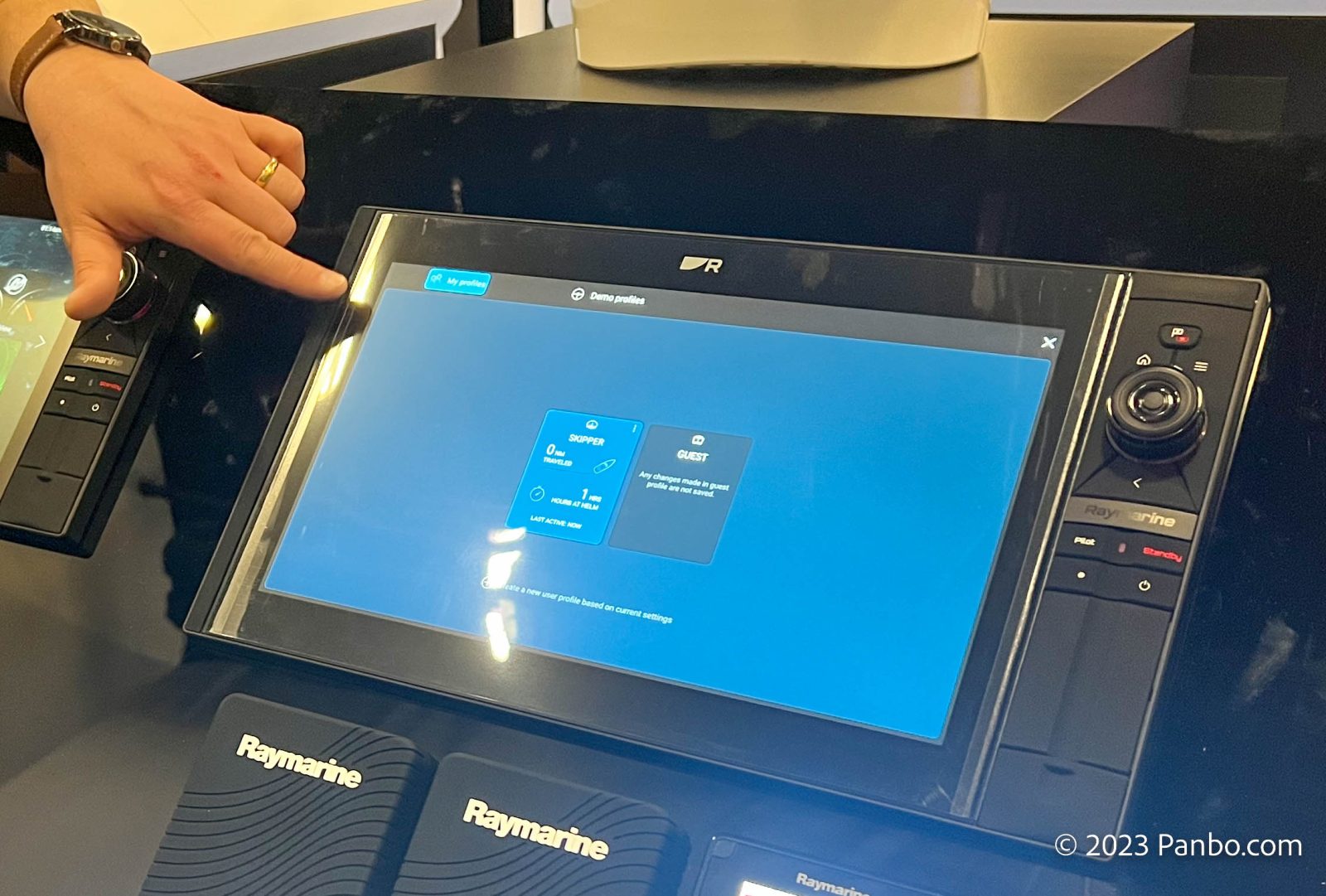
Raymarine announced several new products either at or just before MIBS this year. The list — already discussed a bit on Panbo — includes updates to their Axiom Pro and Axiom XL MFDs, a new sonar sounder, and a new camera. But I got to learn more in Miami, including Raymarine showing off a pre-release version of their latest software update that features an attractive new icon set for the core applications.
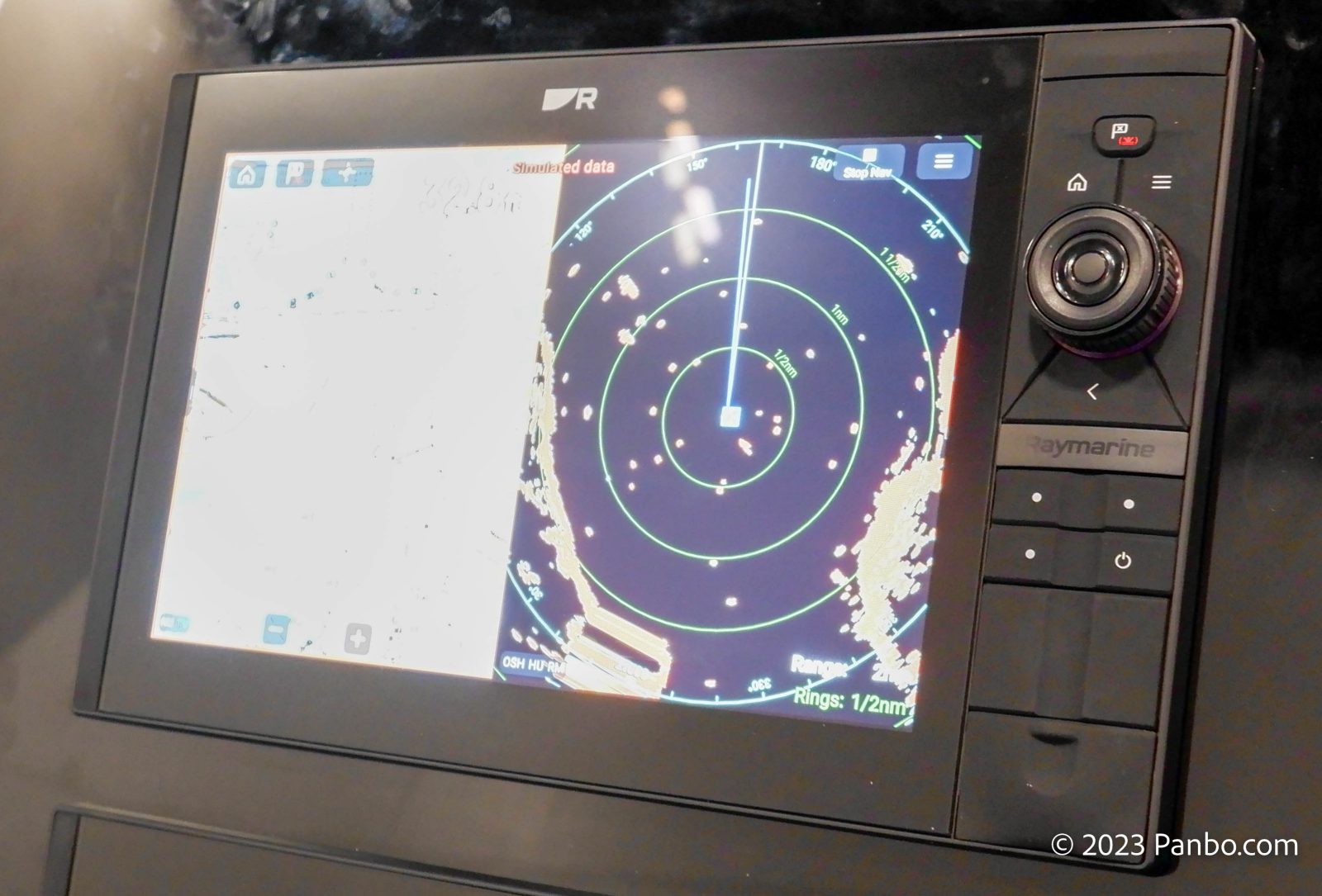
Axiom Pro 2s offer Four major upgrades over the outgoing Axiom Pro: a move from a four-core to a six-core processor, HydroTough coating that repels oil, water, and smudges, updated physical buttons with swappable keypads, and upgraded sonar sounders. Axiom XL 2s offer upgraded processors and HydroTough coating, but they don’t include internal sounders or physical buttons. However, Raymarine has introduced the RVM1600 3D chirp sounder with the same Real Vision Max capabilities as RVM versions of Axiom Pro 2s.
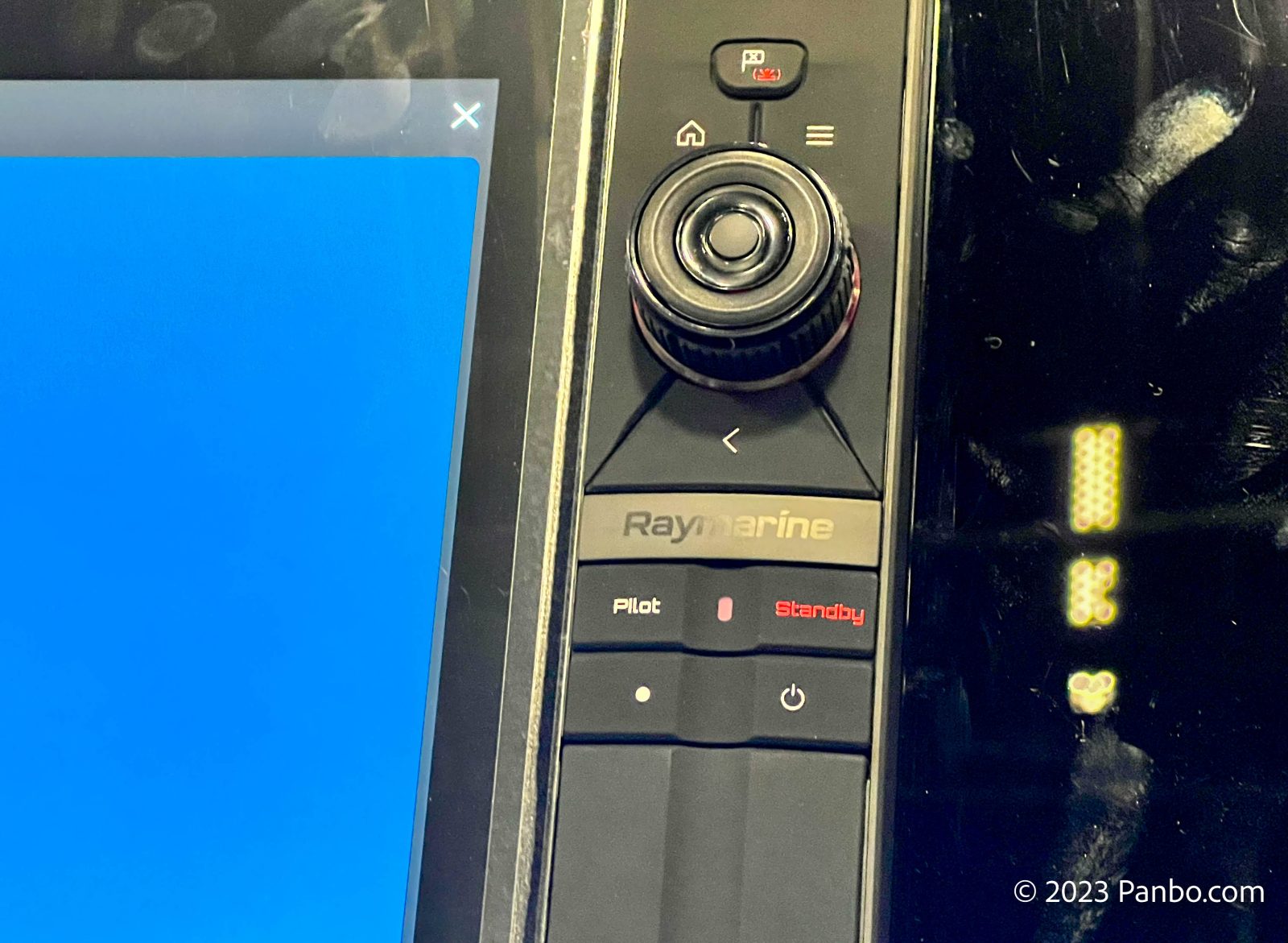
The bottom four keypad buttons can be swapped between autopilot controls and user-assignable function keys. Additionally, all the buttons are newly sculpted to ease button identification by touch without taking your eyes off the water.
Updated sonar sounders
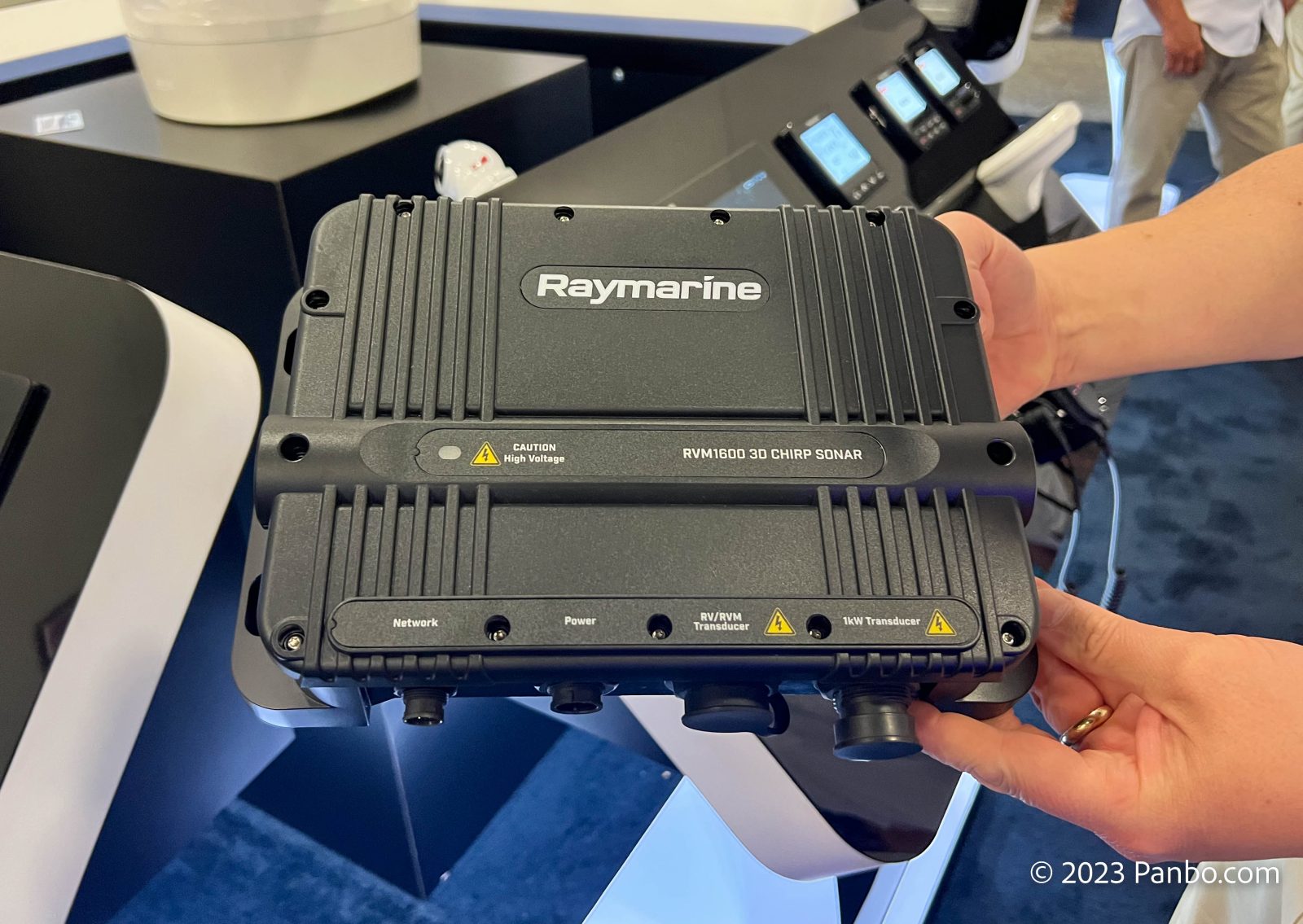
RVM versions of the Axiom Pro 2 and the RVM1600 external sounder share similar upgrades from the RVX1000 and Axiom Pro RVX models. The upgrades include 1kW broadband chirp support from 42 – 250kHz and 600 watts RMS output Real Vision Max. The high-frequency chrip in these sounders now has a range of about 1,200 feet. That’s a 30-percent improvement over prior products. Additionally, DownVision and SideVision ping rates increase to deliver more pings per second on a target. This allows faster screen refresh with fresh data to boost detail and clarity.
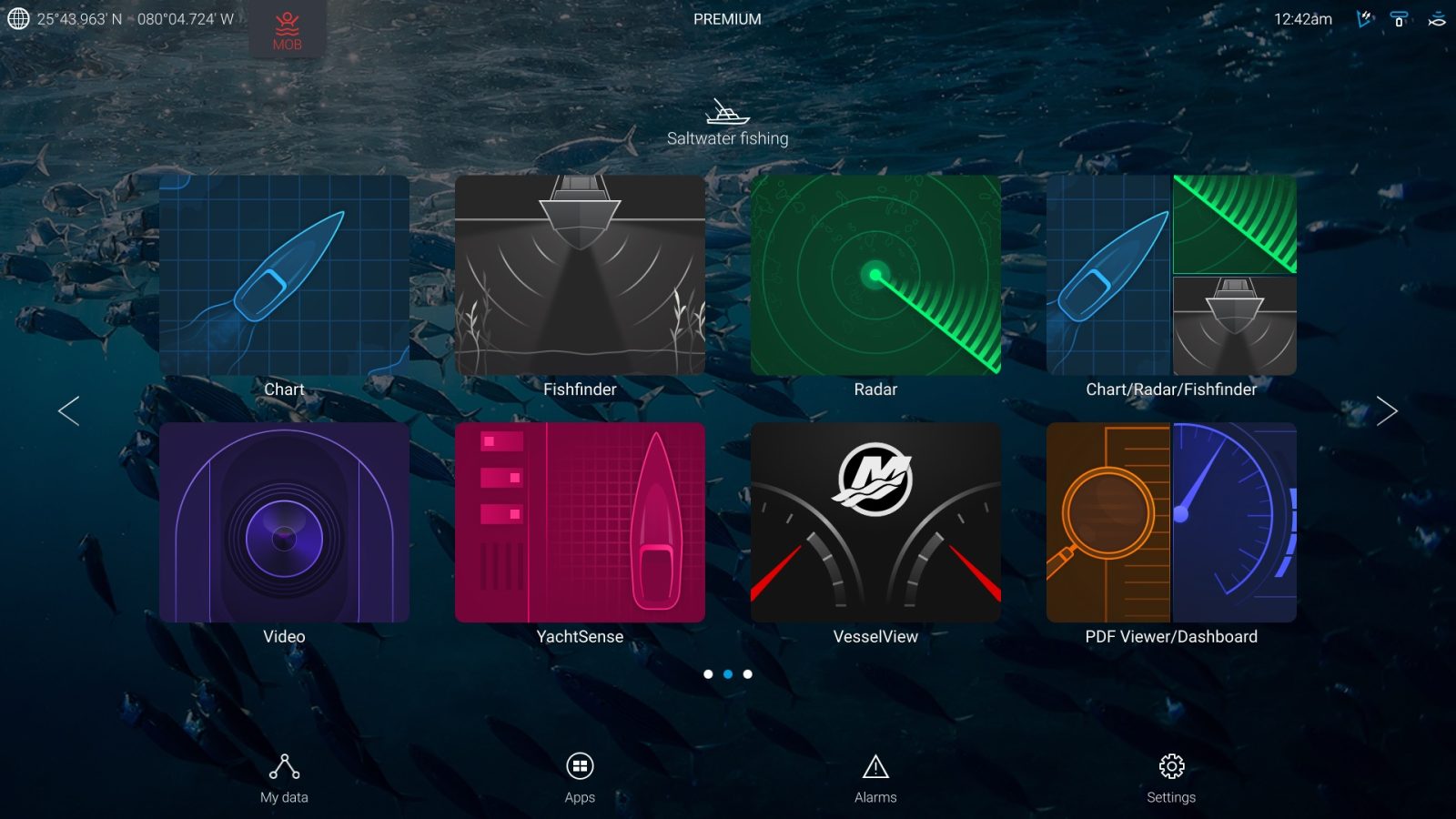
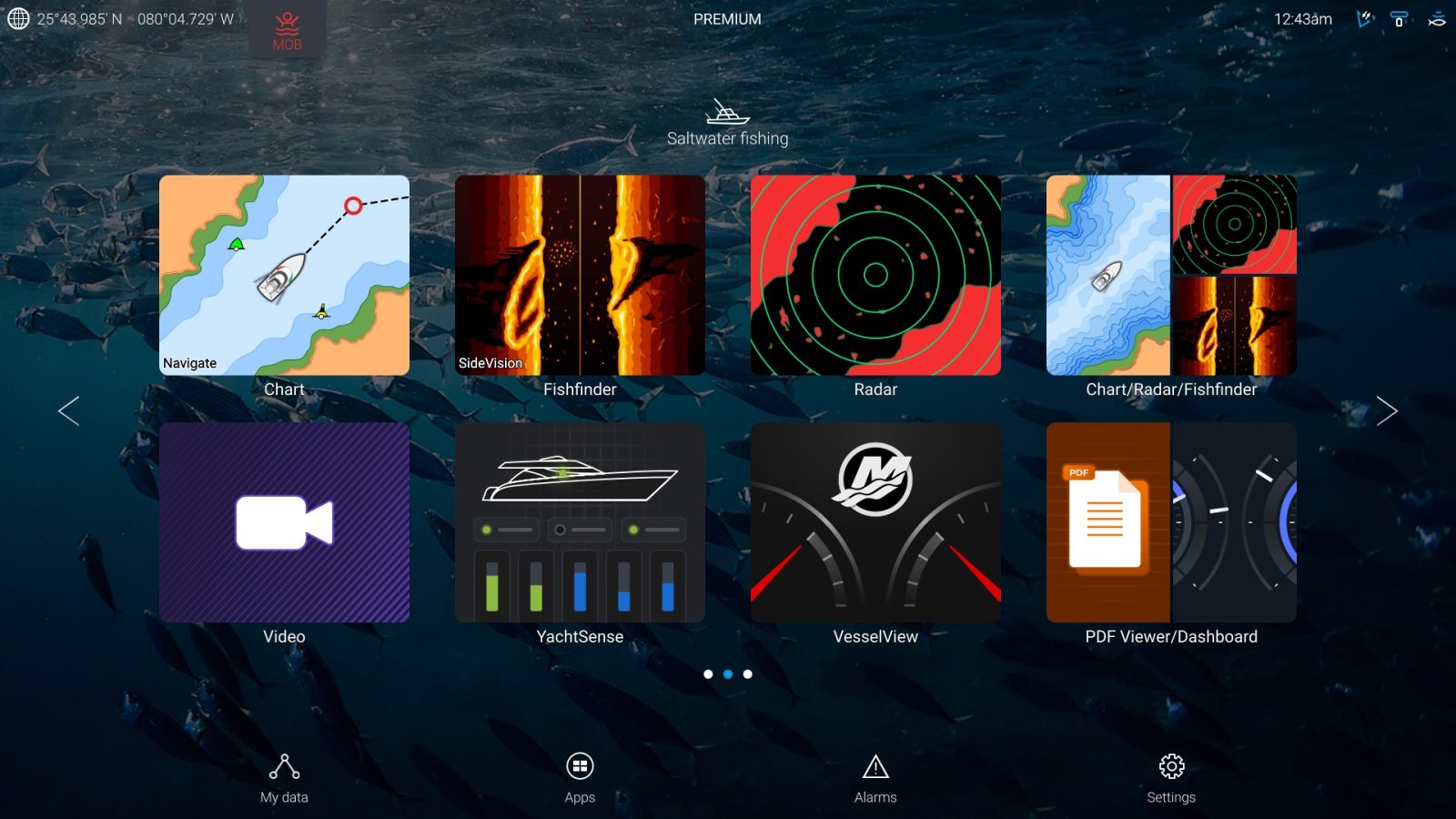

An upcoming release of Raymarine’s MFD operating system, LightHouse 4.4, will introduce update icons. In addition to a more colorful and dynamic set of icons, the new icons also give the user more information about each app. Previously, all apps of a single type — chart, radar, sonar, etc — would display the same chart icon. With the new icons, the icon will indicate the customization, in the bottom screenshot above, there are multiple chart icons, but they’re differentiated based on the customization of the chart display. So, for example, the second icon in the bottom row shows a Fish Mapping icon because that chart view has been customized to display Sirius XM’s Fish Mapping.
Cam300
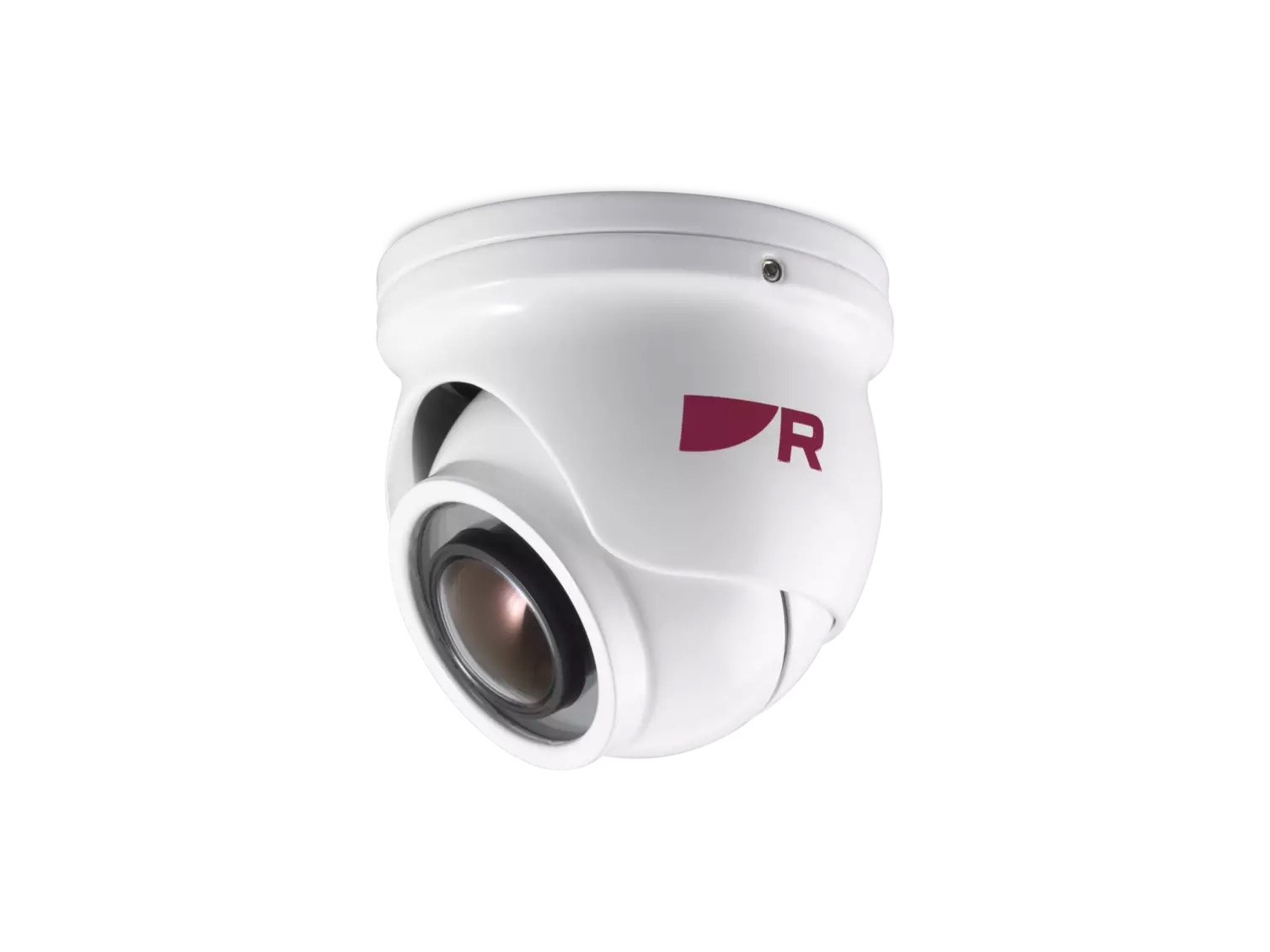
They also introduced a new visible light camera, the Cam300. The three-megapixel sensor delivers up to 1080p resolution. The camera has built-in IR emitters to allow extremely low-light visibility up to 10 meters from the camera. Raymarine’s Jim McGowan also mentioned how well the Cam300’s 160-degree horizontal field of view will work with the AR-200 to deliver augmented reality.
EchoPilot integration
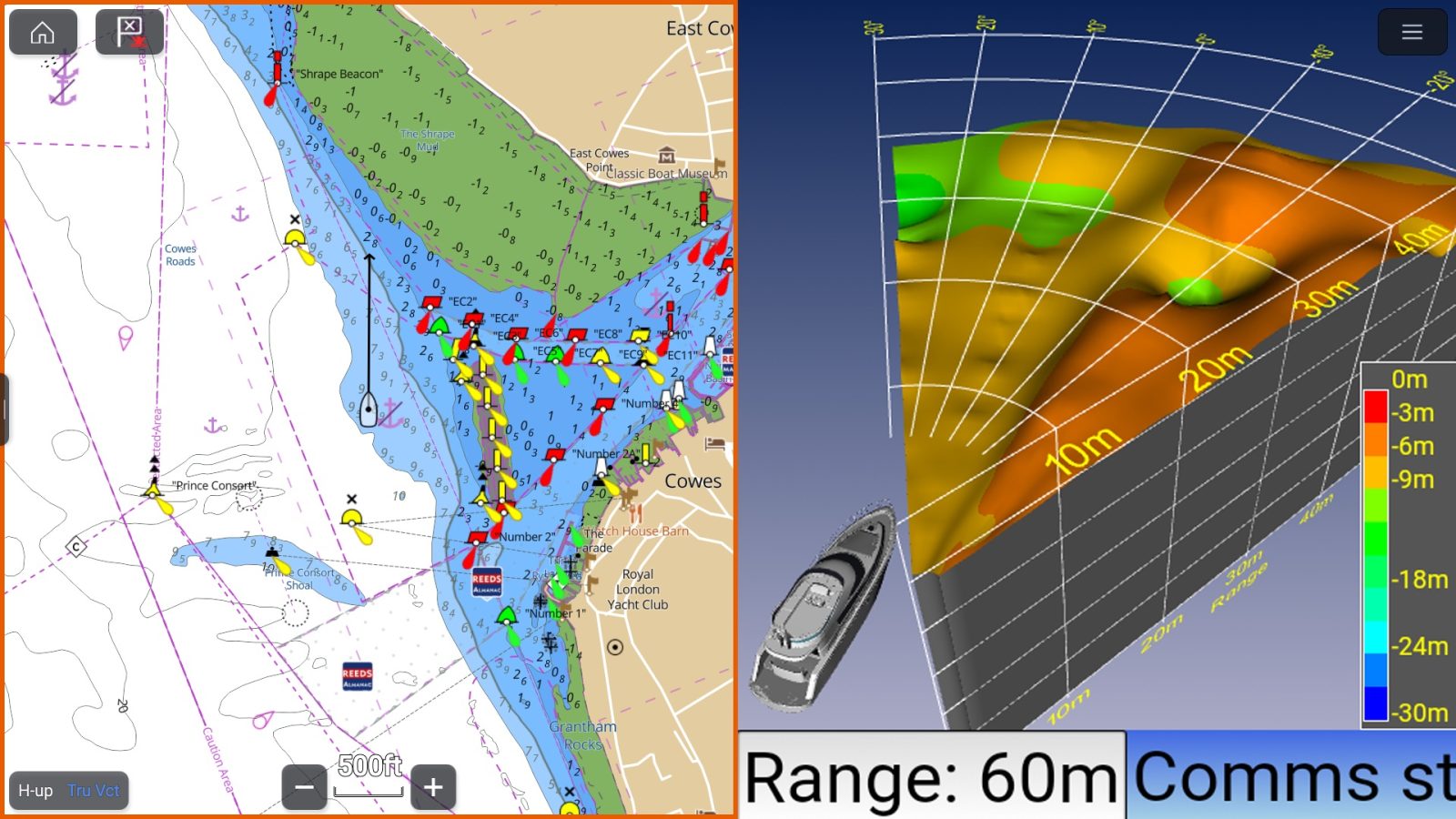
Finally, although not displayed at MIBS, Raymarine recently completed an integration of EchoPilot’s forward-looking sonar. As the screenshot above shows, the EchoPilot interface displays alongside other Raymarine apps. Although I have reservations about the overall utility of forward-looking sonar, this addition closes a gap in Raymarine’s product offerings.













Exactly what are your reservations about the utility of forward looking sonar? I really want to hear this, as it seems to be a common thread among a lot of people that are not anchoring and exploring islands that are not charted well. Please do tell.
My reservations are simple. The shallower the water, the less range forward looking sonar can achieve. The forward looking range of sonar is usually quoted as a multiple of depth at 8-10 times depth. That means, in 8 feet of water, your best range is 80 feet and it could easily be as little as 64 feet. So, if you’re picking your way through an anchorage at 0.5 kts, you can probably put the information from FLS to good use and avoid an obstruction. But, if you’re moving even at a 2 kts, it’s going to be difficult to impossible to get the boat stopped in that kind of range.
In essence, when you need it most, it offers the shortest range. I’ve talked to too many people who believe FLS is going to be a cruising safety tool to keep them out of trouble. I believe the reality is, it will only help you if you already know you may be in trouble.
-Ben S.
So are you suggesting that hitting an underwater rock at 2 kts is the same as hitting it at 0.5 kts? Besides when I am surveying and anchorage a location I would not be doing 2 kts. I have up to 5m of tide at springs here so would anchor in 9m. 2 for the keel and 2 and for a good nights sleep. That for me is 9m plus 1.5 to the bow roller or 10.5m total so all my 50m of chain is out. That is a few metres less than the chain and boat length combined of 64m. So say 60 m and that gives a circle diameter of 120m or about 400 feet. A quick survey with forward looking scan is just the job..
Not at all. I’m suggesting that use cases for FLS are more limited than many consumers understand. I’m suggesting that even at 2 kts, you may not have enough time to stop the vessel. I’d say that hitting a rock at any speed is a bad outcome and one to be avoided.
-Ben S.
An observation – one of the details of the Axiom 2 Pro is that RayMarine has dropped NMEA0183 support in their chartplotter. I was doing some noodling about NMEA 2000 last night and I found a comment in a Panbo thread in 2007 worrying about manufacturers dropping 0183 support in favor of N2K – well, they finally did – 16 years later! Ben Ellison assured that commenter that manufacturers wouldn’t be dropping 0183 support anytime soon – looks like he got that right.
Now Ray has a workaround if you still need 0183 – they even have the required Actisense converter in their accessories list – but it doesn’t come native anymore.
We are seriously looking at the Axiom 2 Pro because it will fit in our Helm Pod to replace the e95 we have now – and our e95 a) leaks in the rain and goes coo-coo if it gets wet with saltwater and b) is no longer supported 🙁
Hartley
S/V Atsa
Agreed on forward looking. One would think if the tech is good enough to look down 60m or so, you could change the pitch to look forward 60m in shallow waters to find coral heads. I’m guessing it’d take some signal tuning dealing with the water surface, but it’d be worth it. I’d pay for it.
We don’t care about 10m below the boat, we care about 2m below the boat!